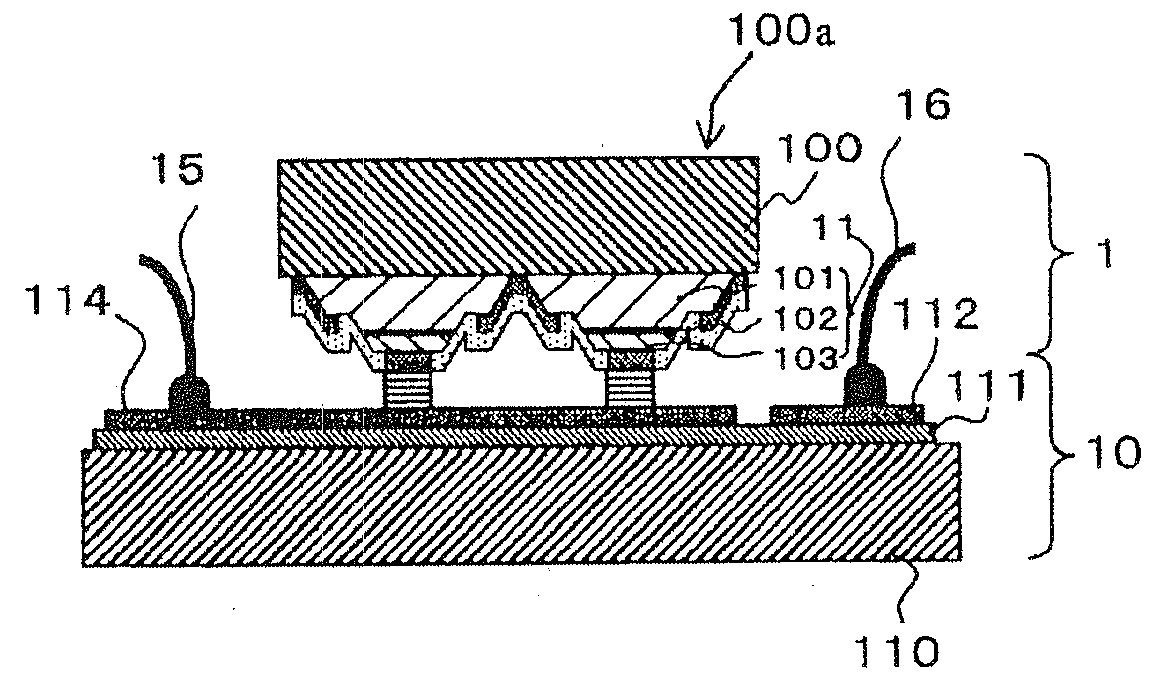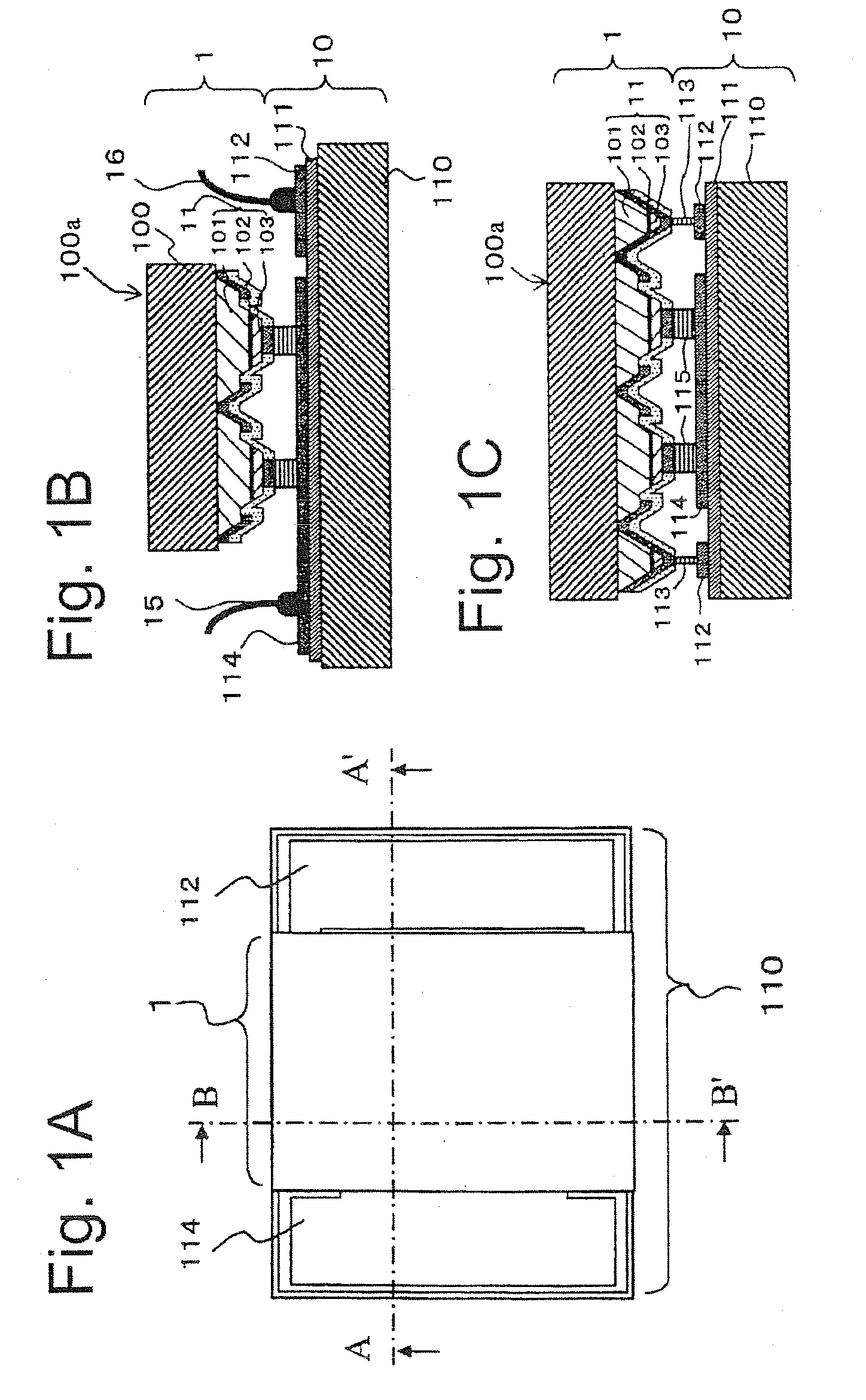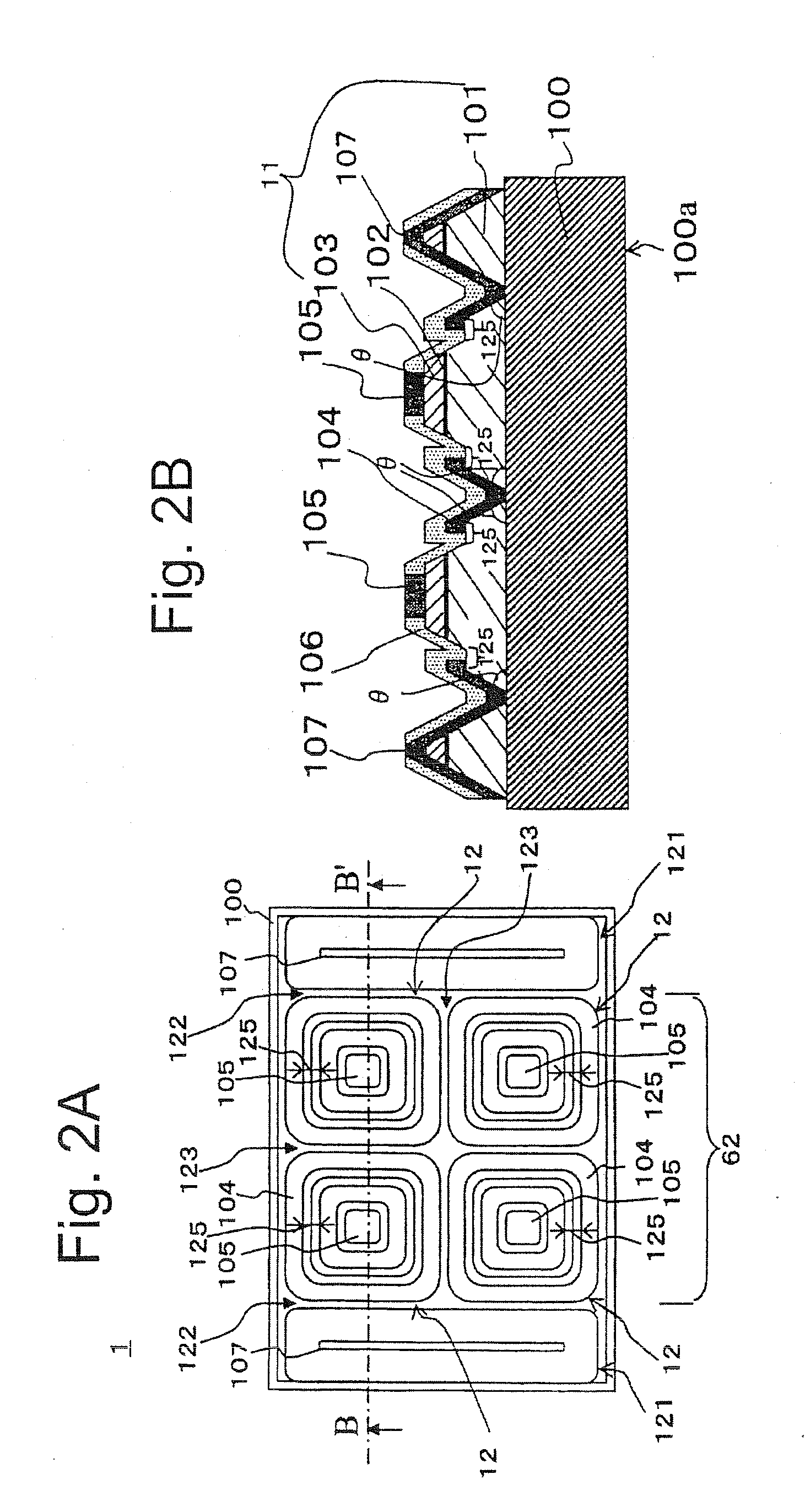Semiconductor Light Emitting Device and Manufacturing Method Thereof
a technology of semiconductors and light emitting devices, which is applied in the direction of semiconductor lasers, solid-state devices, lasers, etc., can solve the problems of accelerating degradation, reducing the performance of devices, and device modules, and not describing in detail how to incline the end face of resist masks, etc., to achieve stable electric characteristics and high intensity
- Summary
- Abstract
- Description
- Claims
- Application Information
AI Technical Summary
Benefits of technology
Problems solved by technology
Method used
Image
Examples
Embodiment Construction
[0052]Some exemplary embodiments of the disclosed subject matter will be hereinafter described.
[0053]An embodiment of a semiconductor light emitting device made in accordance with the principles of the disclosed subject matter, as shown in FIGS. 1A to 1C, is a flip chip in which a light emitting device section 1 can be mounted on a support substrate section 10.
[0054]The structure of the light emitting device section 1 will be described. FIGS. 2A and 2B show the detailed structure of the light emitting device section 1. The light emitting device section 1 can include a sapphire substrate 100, a nitride semiconductor layer 11, electrodes 104 and 105, and a protective film 106. The nitride semiconductor layer 11 includes at least an n-type nitride semiconductor layer 101, a luminescent layer 102, and a p-type nitride semiconductor layer 103 which can be laminated in this order on the sapphire substrate 100. In this example, the nitride semiconductor layer 11 is designed so as to have a...
PUM
| Property | Measurement | Unit |
|---|---|---|
| transmittance | aaaaa | aaaaa |
| thermal conductivity | aaaaa | aaaaa |
| distance | aaaaa | aaaaa |
Abstract
Description
Claims
Application Information
 Login to View More
Login to View More - R&D
- Intellectual Property
- Life Sciences
- Materials
- Tech Scout
- Unparalleled Data Quality
- Higher Quality Content
- 60% Fewer Hallucinations
Browse by: Latest US Patents, China's latest patents, Technical Efficacy Thesaurus, Application Domain, Technology Topic, Popular Technical Reports.
© 2025 PatSnap. All rights reserved.Legal|Privacy policy|Modern Slavery Act Transparency Statement|Sitemap|About US| Contact US: help@patsnap.com



